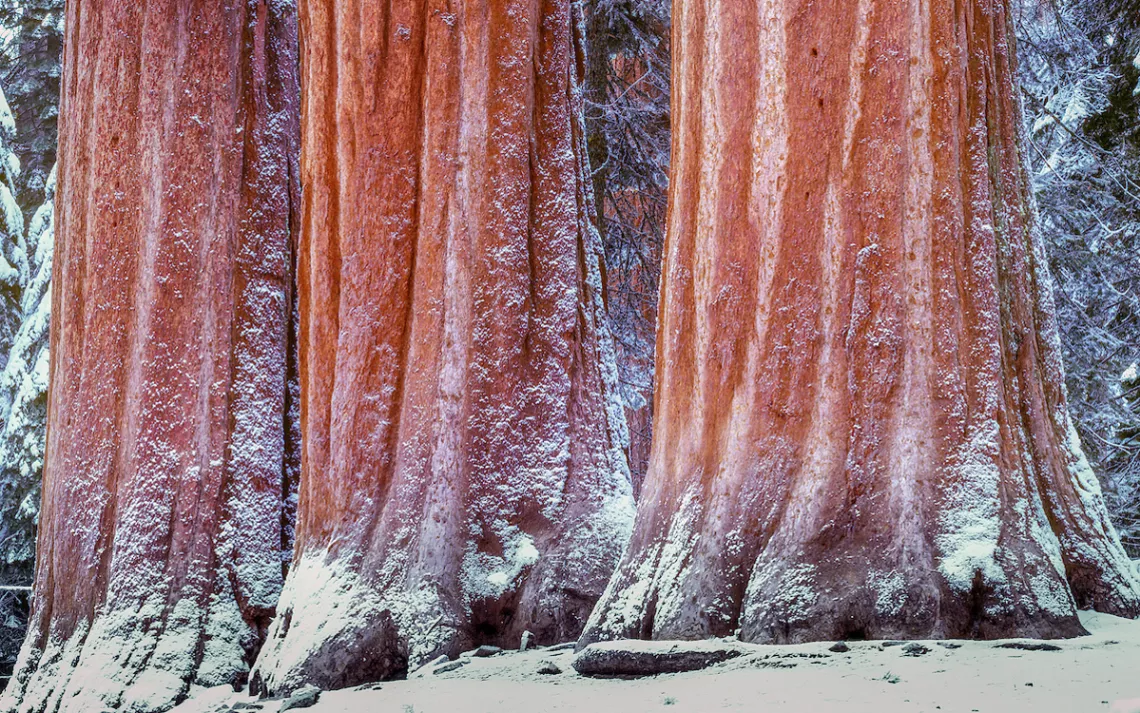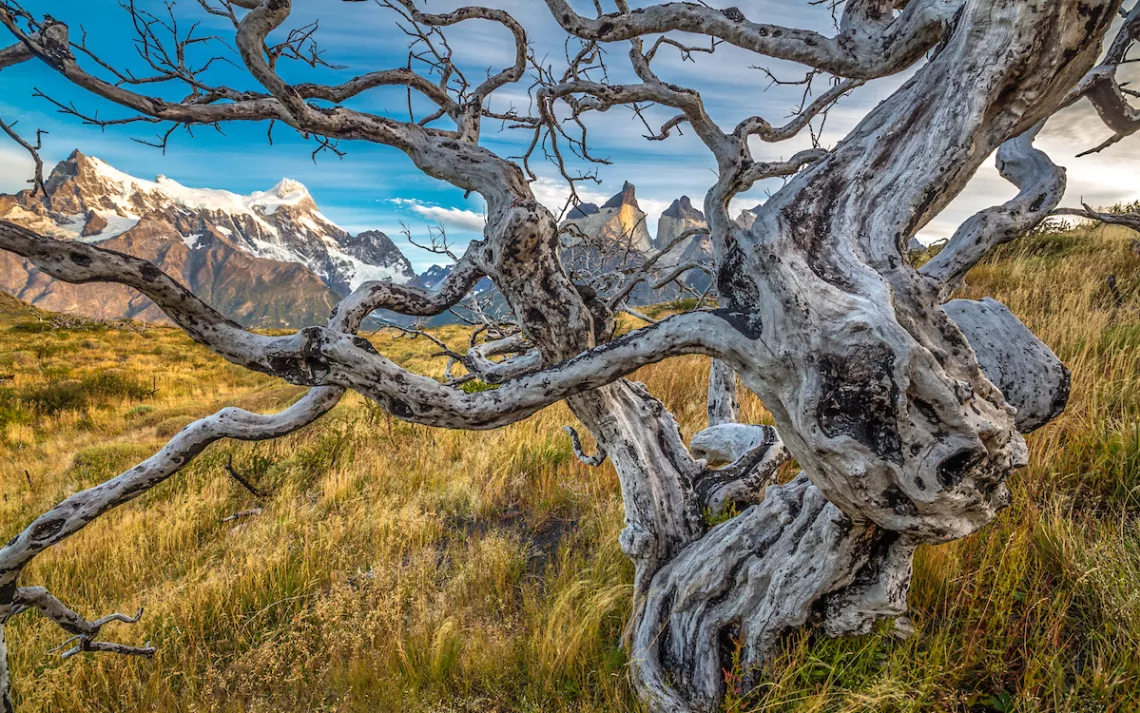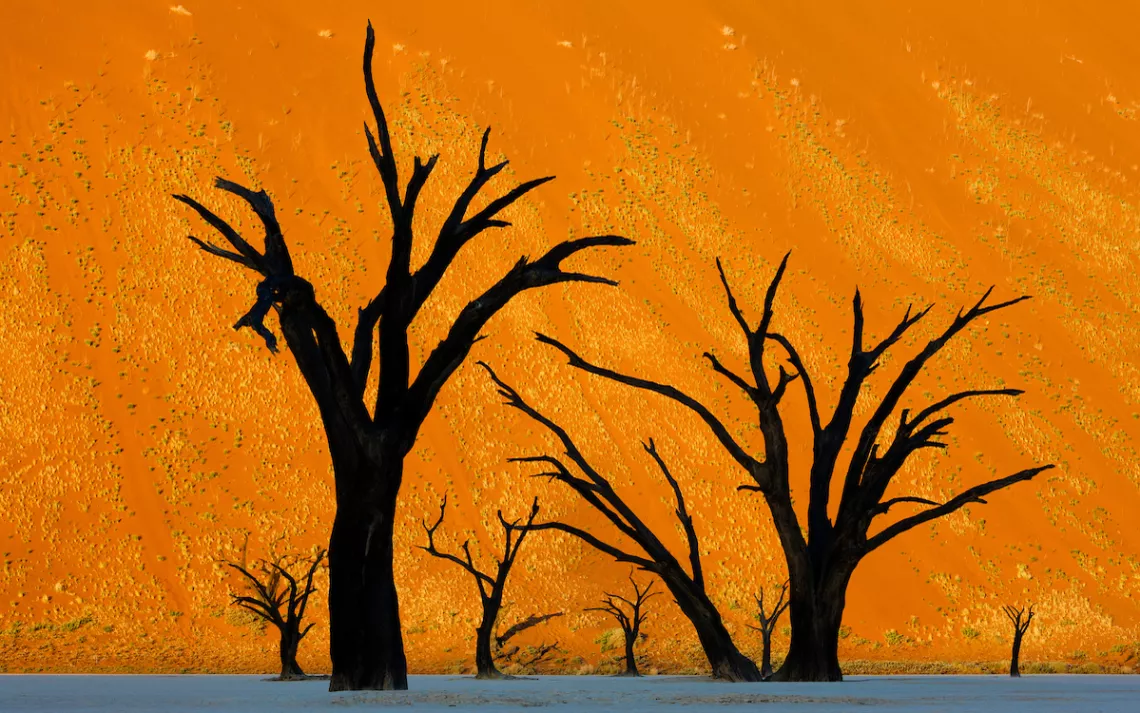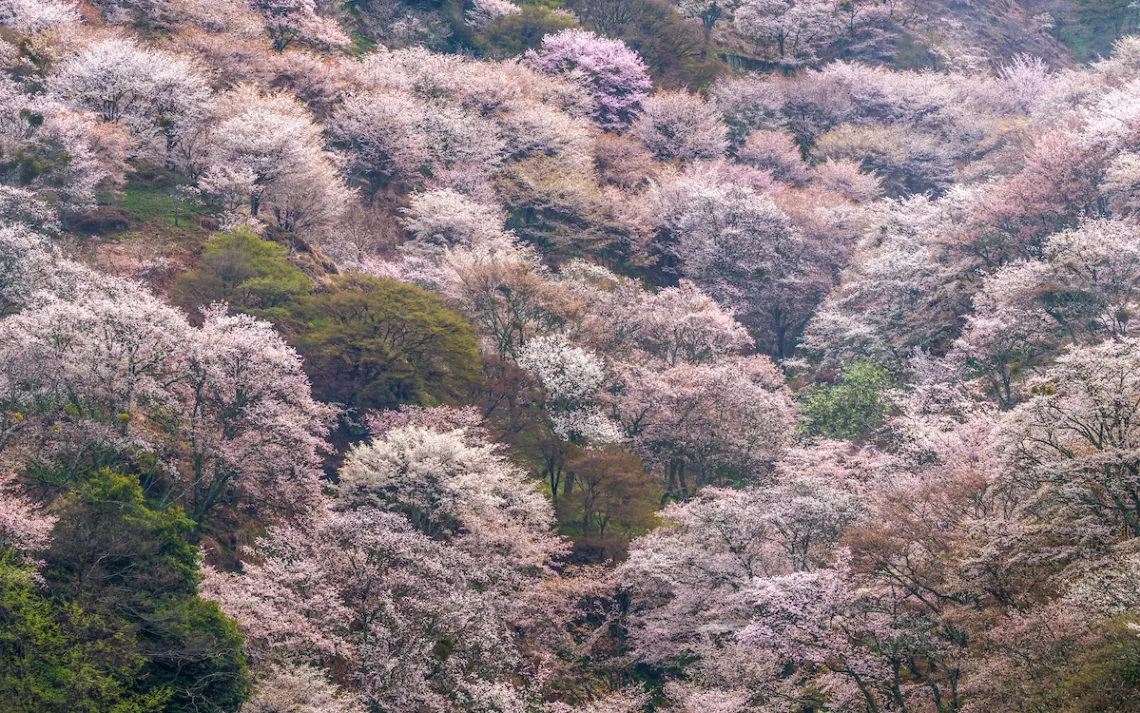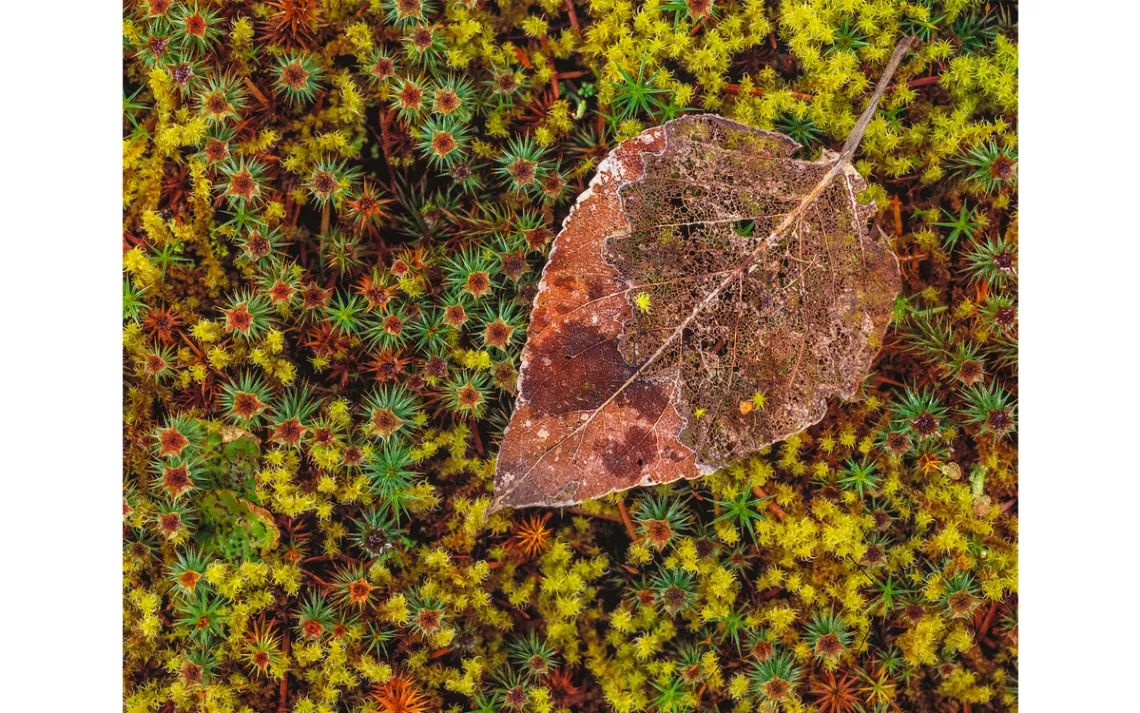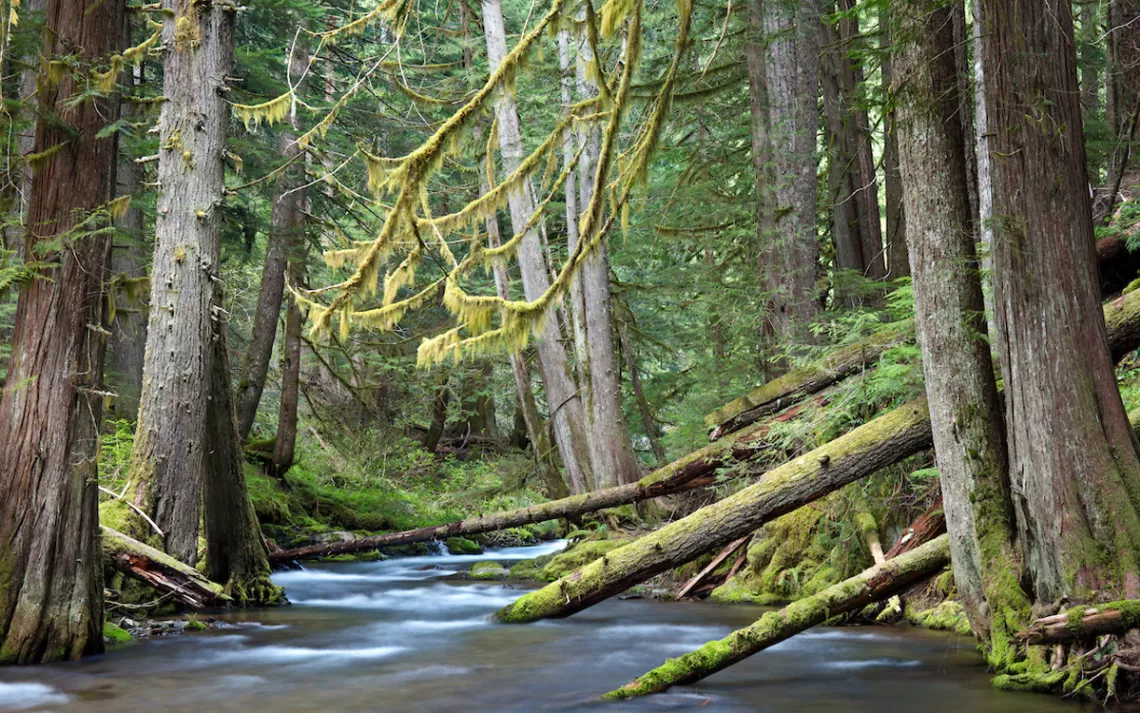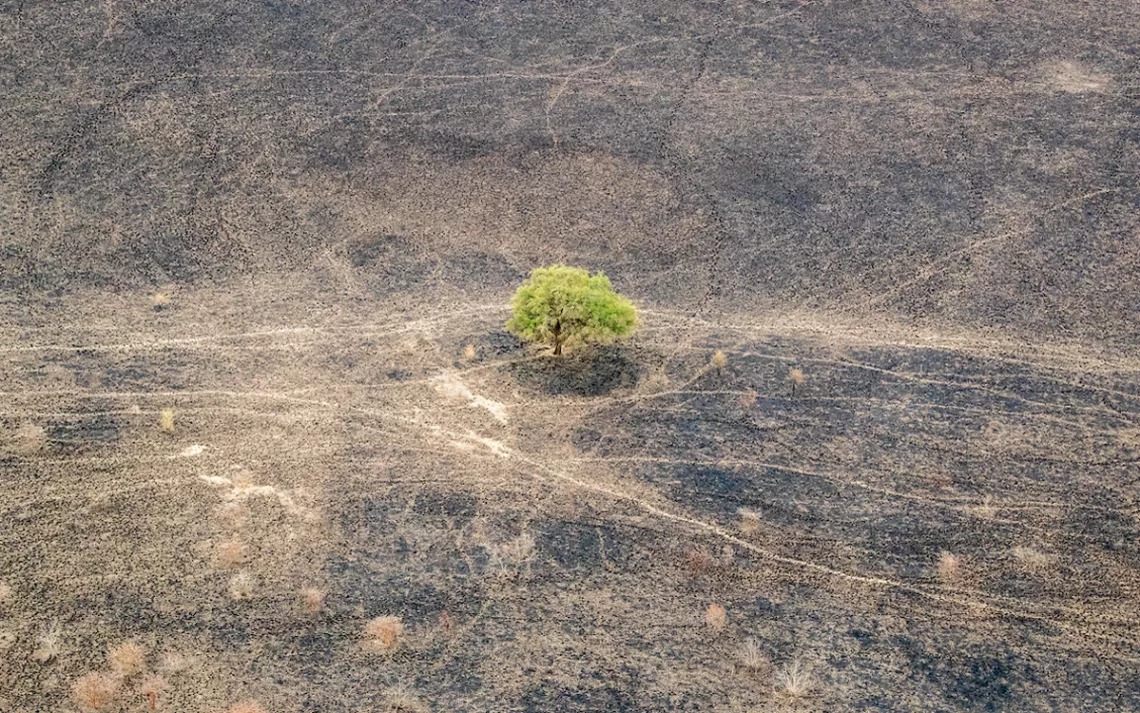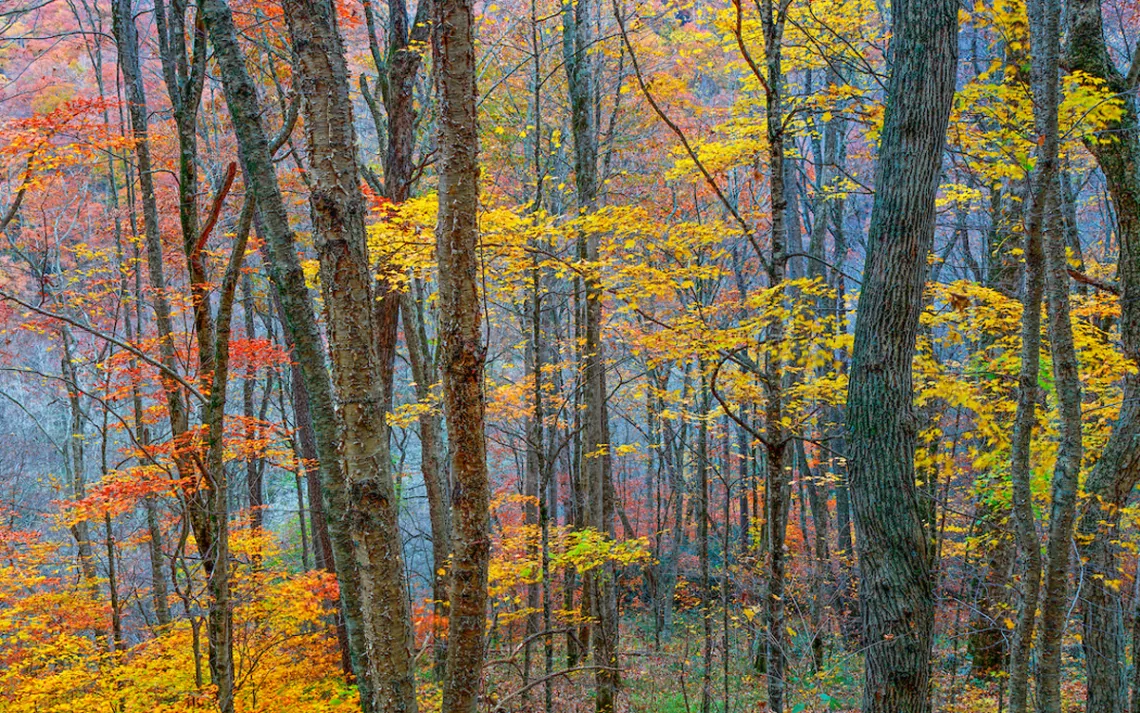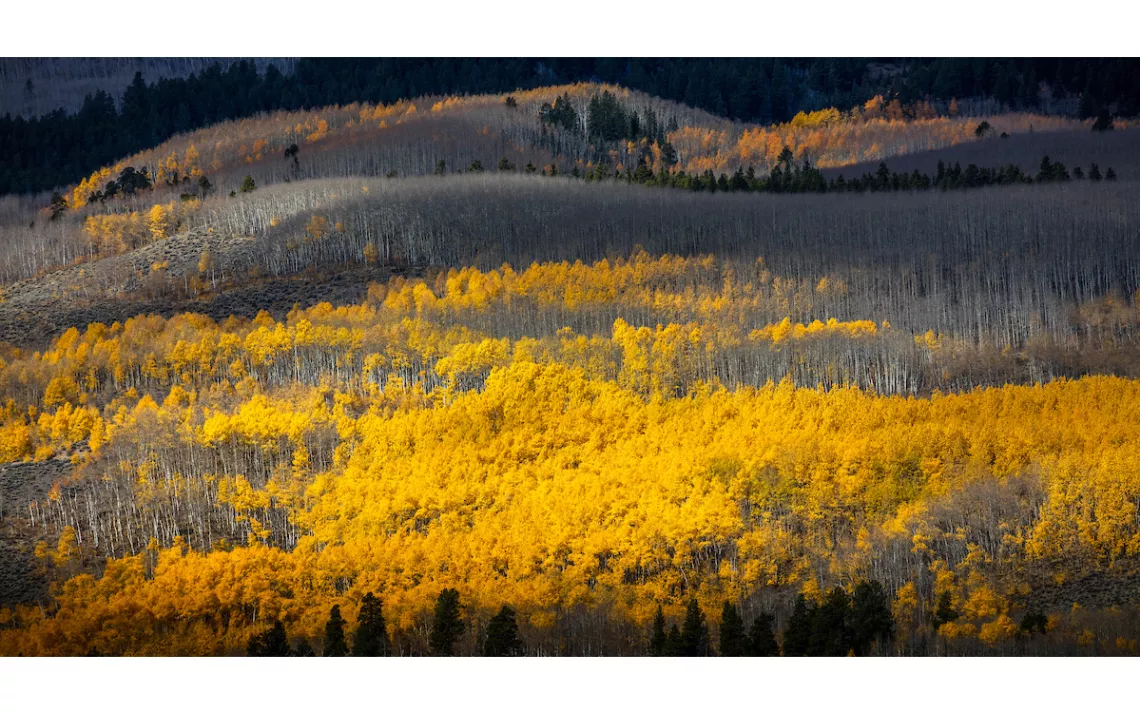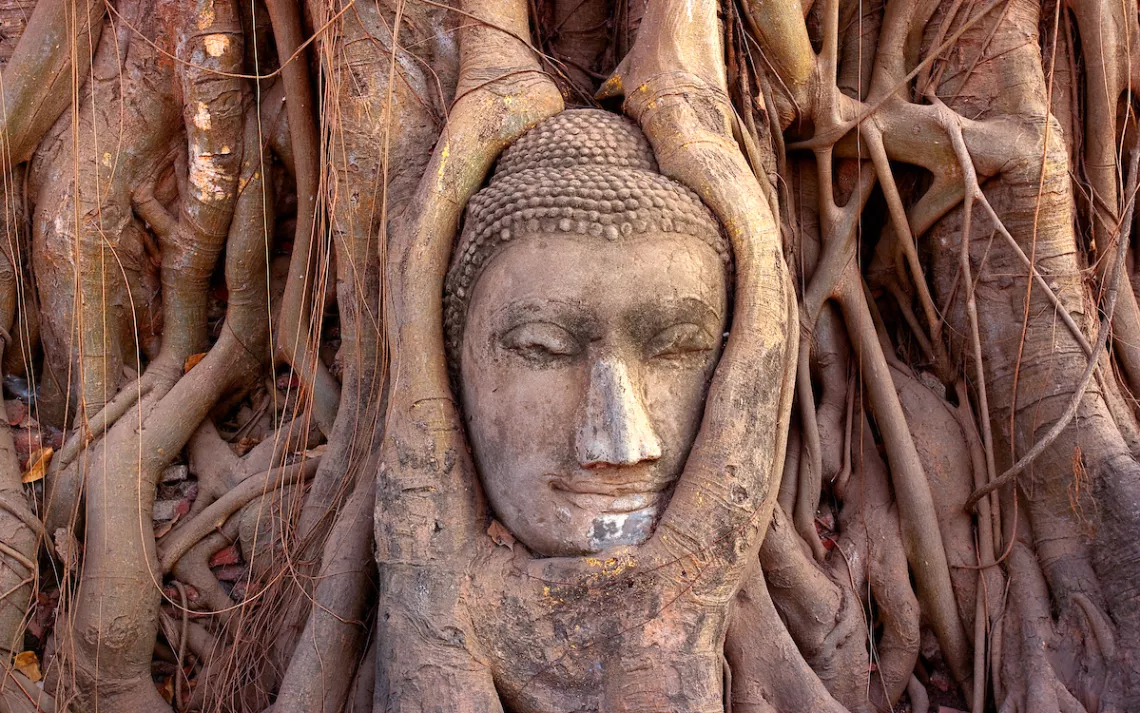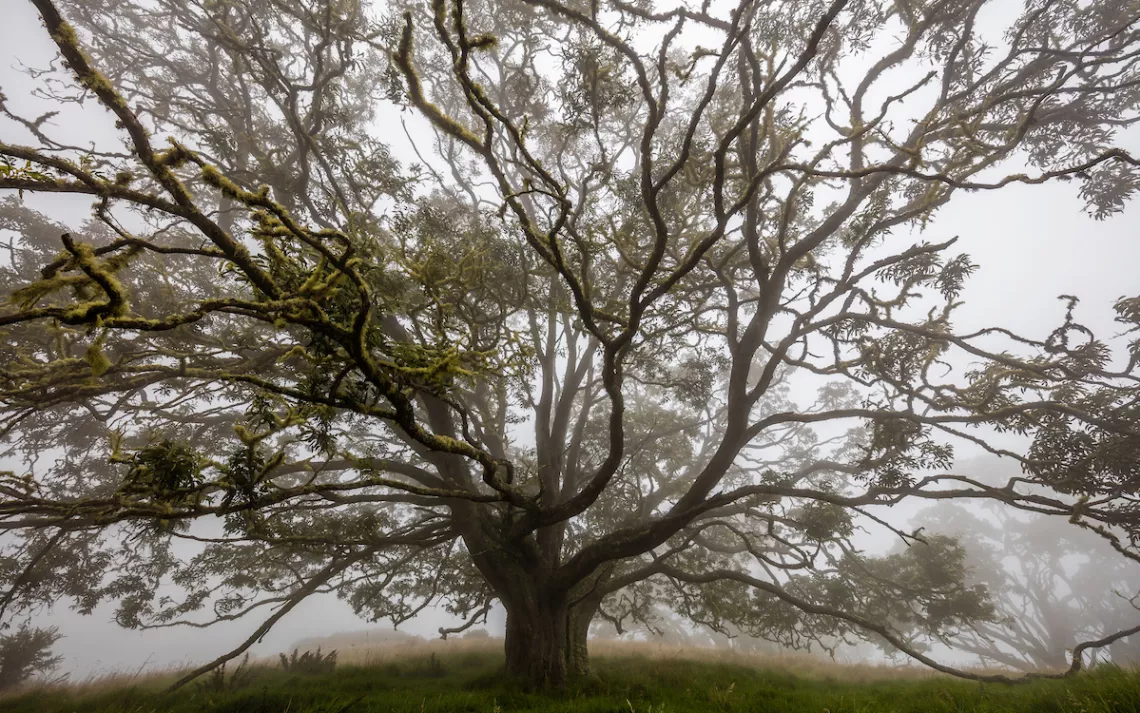Art Wolfe’s Arboreal Imagery
Globe-trotting photographer surveys the world’s sacred trees
Photos by Art Wolfe, from Trees: Between Earth and Heaven, photographs by Art Wolfe, text by Gregory McNamee, introduction by Wade Davis (Earth Aware Editions)
In his new book, Trees: Between Earth and Heaven (Earth Aware Editions, 2018), photographer Art Wolfe turns his lens to the woody and fibrous, carbon-sequestering perennials that define so many landscapes around the world. The book includes flat-topped acacias in the African savanna, towering spruce and cedar wrapped in moss, twisting and twining koas and banyans, and giant sequoias covered in snow.
But to an artist like Wolfe, trees represent much more than the sum of their parts. “There’s a sacredness in forests that is unlike any man-made structures,” he says. Or as ethnobotanist Wade Davis writes in the introduction to the book, trees are “living entities, points of inspiration, and metaphors to propel our lives forward.”
In Trees, Wolfe works with writer Gregory McNamee to present a portfolio of tree photography from a decades-long career. Wolfe has been a professional photographer since the 1970s, shooting assignments for magazines like National Geographic and Smithsonian and dozens of books. Since 1989, he has published at least one book a year (including one from Sierra Club Books in 1993). His subjects range from migrating species to rainforest ecosystems and places like the Himalayas and his native Pacific Northwest, where he first developed a particular love for trees.
“I have a special place in my heart for the temperate rainforests of my home state,” writes Wolfe in an email to Sierra from India, where he is working on his next book project on elephants. “The smell of cedar and hemlock, spruce and fir, and the soft greenness of moss is what I love coming home to.”
Wolfe lives in Seattle, though he spends nine months out of the year in places like the desert dune landscape of the Namib or the granite and wind-swept mountains of central China. Before his current trip to India, he was in South Georgia Island photographing king penguins.
The photographs in Trees span six continents and bring the world’s most iconic tree species in vivid focus. “This book is meant to be immersive,” says Wolfe. “It is meant to make you feel like you are standing in a misty autumn forest or watching light dance through the branches of redwoods.”
Trees is an example of Wolfe’s compositional mastery. “One thing I try not to do is take typical, static ID shots of trees,” he says. Rather, he uses the patterns and lines of forests to draw viewers into the frame, into the visually stimulating abstract world that forests can represent. “Trees lend themselves magnificently to all these elements of design,” says Wolfe. “Nature is not chaos.”
The result of Wolfe’s work is a stunning collection of color photographs lending credence to that certain sacredness that exists in the forest and nowhere else. “I try to photograph what’s beautiful on the planet, to give people a reason to want to save the environment,” he says. “The wilderness is bigger than us, but we hold its future in our hands.”
 The Magazine of The Sierra Club
The Magazine of The Sierra Club
